NICE – JEWEL OF THE FRENCH RIVIERA
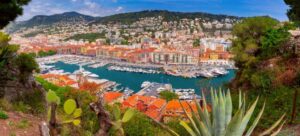
No matter how often you visit the city of Nice on the French Riviera, there are always plenty of delights to experience and explore. It wasn’t always the case though. For many years, much of Nice was run-down and the area close to the docks was nothing more than a seedy sailors’ haunt. This was certainly the case when we first visited Nice back in 1975. In those days, Cannes was the place to go. Today, Nice is almost unrecognisable from those days. All that has been cleaned up, restored and revitalised and the area is full of vibrant cafes and restaurants, hotels, inviting shops, pedestrianised streets and some of the best museums in the country.
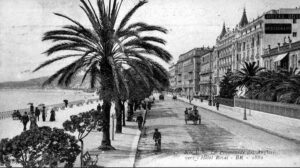
Back in the 18th century, it became fashionable among the English aristocracy and the new class of wealthy merchants, to visit Italy on the so-called Grand Tour. The easiest way to get to Italy was across France to Marseilles, then take a boat along the coast, stopping along the way at the small port of Nice. The English visitors soon came up with the idea of wintering in this exceptionally mild climate, rather than enduring a cold, damp English winter. Mediterranean tourism had begun, and by 1820, there was a sizeable British colony in Nice. In 1822, the Rev. Lewis Way decided to employ local workmen to build a fine walkway beside the beachfront, the Baie des Anges. The arrival of the railway in 1864 made Nice far more accessible from Paris and northern Europe. Nice has never looked back. In 2021 th city was inscribed as a UNESCO World Heritage Site because of its beauty, history, architecture and natural spaces.

In the days when the early English tourists began visiting Nice, the city was not part of France, but part of the Kingdom of Sardinia, which covered an area that is now mostly in Italy. It was not until the signing of the Treaty of Turin in 1860 that the Duchy of Savoy and the County of Nice were ceded to France. Consequently, Nice and its immediate region have a culture and traditions that have much in common with those of Italy.
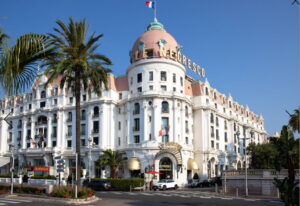
The image many of us have when we first think of Nice is the Promenade des Anglais, as the locals soon called it upon its completion. This long road, running alongside the sea for 7 kms., is lined with elegant hotels, such as the magnificent Negresco with its huge, pink dome, and other luxurious hotels, such as Hyatt’s Palais de la Méditerranée. The Negresco was built in 1912 by Henri Negresco and opened in 1913. He came from Budapest, and went to the French Riviera in order to find work. He became the director of the Municipal Casino in Nice, and had the idea to build a sumptuous hotel of quality that would attract the wealthiest of clients. The spectacular Baccarat crystal chandelier in the hotel’s Royal Lounge was originally commissioned by Czar Nicholas ll who, due to the October Revolution in Russia, was unable to take delivery. In 2003, the Hotel Negresco was listed by French government as a National Historic Building.
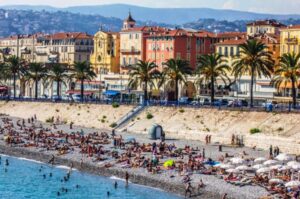
Strolling along the Promenade des Anglais, it’s tempting to relax on one of the famous blue beach chairs, and gaze out over the blue Mediterranean. Of course, Australians are not exactly impressed by the lack of sand, and it takes some getting used to the pebbles. We love watching people gingerly negotiating their way across the pebbles to find a spot to stretch out or head for the water.
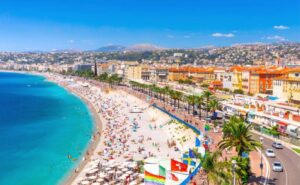
There are other compensations however, such as the selection of convenient and very appealing-looking cafes and restaurants right on the beach, offering anything from ice creams and snacks, or more elaborate meals. A cocktail on the beach at sunset is a great way to finish off a busy day.
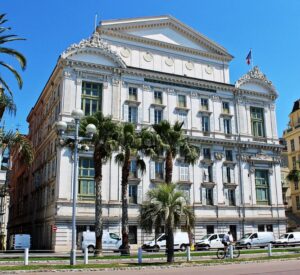
The Promenade des Anglais morphs into the Quai des États-Unis, where you’ll see the beautiful Opéra de Nice. Its entrance is located on rue Saint-François de Paule, with its southern façade facing the sea. This beautiful white building opened in February 1885 on the site of an earlier opera house that had burnt down. The Théâtre Municipal, as it was then called, re-opened with Verdi’s Aida. Today, it’s referred to as Opéra Nice Cote d’Azur.
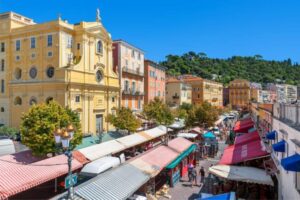
Also backing onto Quai des États-Unis is the Cours Saleya market, which is in the heart of Vieux Nice, the old town. Always pulsating with life, its striped awnings cover its centre and shelter the products on offer in the daily market.
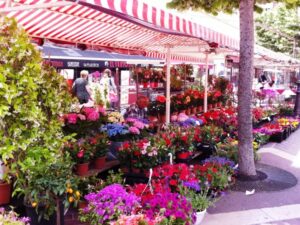
Often simply referred to as the Flower Market, it offers much more, with stalls overflowing with enticing displays of fresh, seasonal produce, while others offer such products as spices, olives, local honey, soaps etc. I’ve often bought small packets of dried herbes de Provence and fragrant dried lavender sachets here. This is always on our Must Visit agenda, and after browsing through the market, there are any number of delightful cafes lining the perimeter to choose from for a relaxing coffee or lunch.
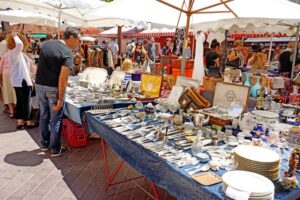
The one day you won’t find flowers and food in Cours Saleya is Monday. That’s the day for the marché à la brocantes, the antiques/flea market, offering anything from old jewellery, furniture, books, vintage clothing and general bric-a-brac. In the warm summer evenings in June, you can browse through the marché artisanal nocturne—the evening crafts market, while strolling through Cours Saleya on your way to dinner. This runs from June to September.
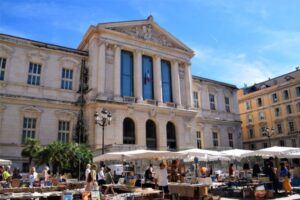
Just one street behind Cours Saleya market is the Place du Palais de Justice, where markets are held almost every Saturday. The first and 3rd Saturdays of the month are devoted to books—anything from used paperbacks to beautiful, rare books. The second Saturday is a craft and painting market, and the 4th Saturday is a market selling old post cards.
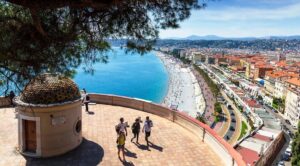
At the end of Quai des États-Unis and Vieux Nice, is the dramatic headland of La Colline du Château, whose former fortress was demolished 300 years ago. Today, La Colline and its park, filled with beautiful Mediterranean trees and shrubs, separates the beach from the old port, le Vieux Port. This is now a yacht marina filled with the luxury yachts of the super-rich.
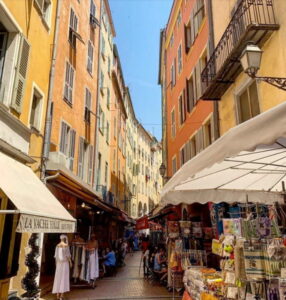
Moving from the open spaces of the Promenade des Anglais into Vieux Nice, is entering into the narrow streets of a traditional Mediterranean city. As in Italy, the narrow streets are lined with 5 storey houses with terracotta tiled roofs and stuccoed walls painted in the warm colours of the south: terracotta, yellows, ochres and reds. Cafes spill out of the old buildings with their tables and chairs spread across the footpaths, meaning that deliveries must be made by hand-cart. The aromas of Mediterranean cooking waft from the kitchens through these streets—a mouth-watering experience at any time of the day. There are lots of little shops selling a range of Provencal/Mediterranean-themed merchandise—most of which is actually very appealing and hard to resist, such as cotton place mats, napkins and tablecloths in pretty Provençal prints, locally made pottery decorated with Provençal and Nicoise motifs, lightweight cotton overshirts, perfect on hot days or over a swimsuit, cotton scarves and shawls, and of course, sunhats and the woven straw baskets, typical of Provence.
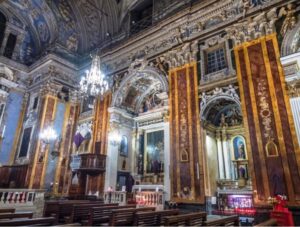
For Baroque aficionados, Nice offers some outstanding sights to enjoy. Baroque was favoured by powerful families to display their wealth, as can still be seen in the Palais Lascaris and Palais Corvesy. In the heart of the Old Town is a beautiful Baroque church, one of the oldest in Nice, the Église Notre Dame de l’Annonciation, usually referred to as the Église Sainte Rita, or Église Saint Jacques-le-Majeur , at no. 1 rue de la Poissonnerie. As you pass by, your eye will be drawn to its imposing Corinthian columns and 42 metre tall campanile. Do pop in to admire the magnificent interior. Its original construction is said to have been around the year 900, but that building was destroyed during the siege of Nice during the Ninth Italian War of 1542-46. The current building dates from 1612, with various alterations up to the 19th century.
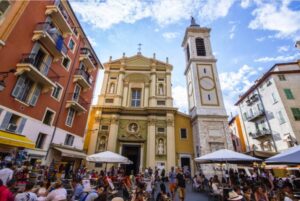
Just a block or two from Église Sainte Rita is the main church in Nice, Sainte Reparate Cathedral, at no. 3 Place Rossetti, dating from 1699. Inside, there are 10 Baroque chapels with ornate altarpieces and many exquisite art objects and statuary. The original church was built in 1075, and rebuilt and enlarged over the ensuring centuries. This impressive and very beautiful church is a Must Visit.

Adjacent to the Cathedral on Place Rossetti, is Fenocchio, the most celebrated gelato shop in Nice. In addition to having reputedly the most delicious ice creams and sorbets, it also offers unusual flavours, such as lavender.
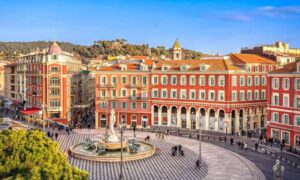
Nearby Place Massena is the centrepiece of Nice, both physically and figuratively. It borders the old town and is a short walk from the Promenade des Anglais. A very convenient bus and tram line runs in a straight line, all the way from the main railway station a few kms away along the main shopping street, Ave. Jean Médecin, right down to Place Massena.
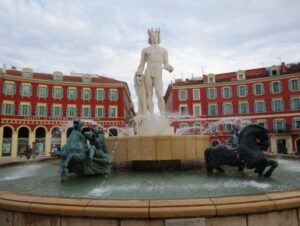
This square, tiled in large black and white tiles, makes quite an impression with its enormous fountain, the Italianate Fontaine du Soleil (Fountain of the Sun God), with its 7m high sculpture of Apollo at its centre, surrounded by other cavorting statuary representing the planets Earth, Mars, Venus, Mercury and Saturn. Place Massena is full of life day and night, just like an Italian piazza, surrounded by curved, arcaded buildings with small shops and café tables and umbrellas spilling out into the sunshine.
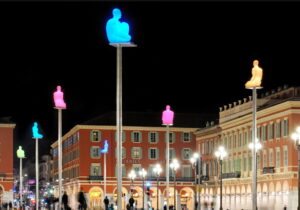
You also can’t miss the 7 statues of kneeling men set on high poles around the Place, called “Conversation in Nice”. These symbolise the continents of planet earth, and are brightly illuminated at night, gently changing colour in a flowing sequence.
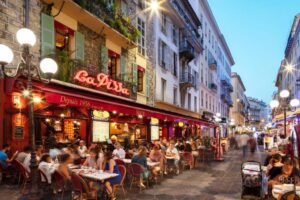
Just off Place Massena is rue Massena, one of our favourite haunts in Nice. It’s a narrow, pedestrianised street lined on both sides with every type of café and restaurant you could wish for, interspersed with cute little boutiques. We used to stay in this street in a little, unpretentious hotel, but after many years, it finally changed hands, and not for the better, in our view. However, anywhere within easy reach of this street is our preferred area to stay, as it offers everything we need for the perfect Nice sojourn.
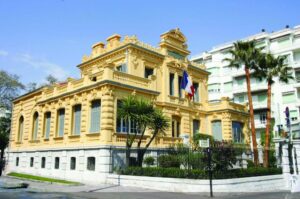
There are many beautiful landmark buildings in Nice. One of which is at 113 Promenade des Anglais, a couple of blocks before the Negresco which is at no. 37. This is the Palais de l’Agriculture, home of the Central Society of Agriculture, Horticulture and Acclimatisation of the Alpes-Maritimes. This gorgeous villa dates from 1901 during the Belle Époque era, and as it’s painted a bright ochre yellow, you won’t miss it! It hosts numerous events, conferences, courses and workshops on the subject of plants, gardening, cactus knowledge, botany and floral art, and its library is open to everyone. No surprise that it’s a listed Monument Historique.
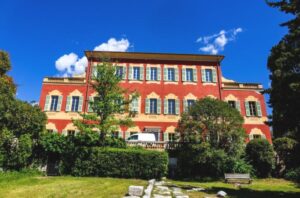
Up on the slopes of the neighbourhood of Cimiez behind the main city, just a block or so from the Musée Matisse, is one of the most spectacular hotels of the Belle Époque era, the Hotel Excelsior Regina Palace, at 71 Bvd de Cimiez. ‘Palace’ is certainly an apt description of this enormous hotel, which you can see from down in the city itself. It was part of the heyday of Nice tourism between the late 19th century and the 1930s.
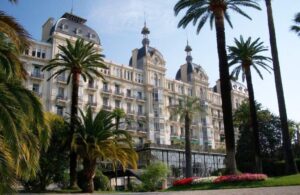
Built in only 18 months, this majestic establishment was designed to meet the requirements of Queen Victoria herself. Behind its imposing façade were about 400 rooms, most with a panoramic view of the whole of the city. The hotel is set in a vast park of over 8,000 sq. m. There are exotic tropical plants, cycle tracks, badminton and croquet courts. Unfortunately, the 1929 stock-market crash forced the sale of the hotel, which was transformed into luxury private apartments. At the entrance to the garden stands a white marble statue of Queen Victoria. The former hotel’s façade as well as its garden, terraces, roof and other architectural features, have been registered as Monuments Historiques since 1992. To get there, take any of the buses, such as the no. 5, that are heading to the Matisse Museum, which is close by.
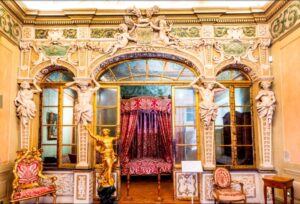
Speaking of museums, Nice has a wealth of wonderful museums. Probably the best-known is the Matisse Museum at 164 Ave. des Arenes de Cimiez. As well, check out the Musée Marc Chagall, Jules Chéret Museum of Fine Arts, the Nice Cimiez Archaeology Museum, Palais Lascaris, Musée Massena and Musee d’Art Moderne et d’Art Contemporain, just to name a few.
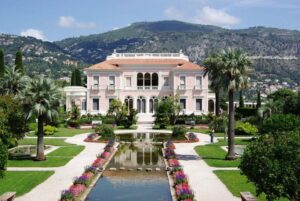
Two of our top favourites are a short bus ride 10 km from the city, namely, the truly gorgeous Villa and Gardens Ephrussi de Rothschild at St Jean-Cap-Ferrat overlooking the Bay of Villefranche, and near it, the Villa Kerylos in Beaulieu-sur-Mer. This is a reproduction of a Classical Greek villa built in the early 1900s by French archaeologist Theodore Reinach. You can buy a combined entry ticket for both these last two magnificent museums. They are easy to get to on a Nice local bus, either the no. 607 or 15.
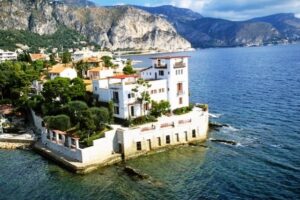
Visit one of the three Nice Tourist Offices for specific info. about the many museums and attractions: There’s one at no. 2, Promenade des Anglais, another at the main railway station and one at Nice Airport. Ask the Tourist Office about the Nice Museum Pass, and also about easy excursions further along the coast to Villefranche-sur-Mer, Beaulieu, Menton and the remarkable perched medieval village and garden of Eze.
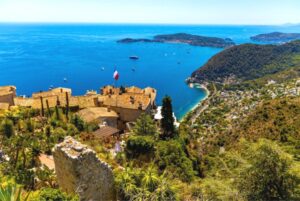
As there is so much to talk about regarding the many wonderful art museums in Nice and the surrounding area, I will talk about some of our favourites in the next post.
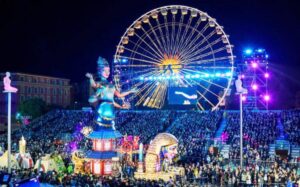


Cheryl — Yet again, a wonderful summary of the joys of Nice. I am saving these up so that I can use them as a guide to the “must see” places.
Anna
Hi Anna,
You’re absolutely right about Nice. There are so many “Must Sees”, which makes it the ideal destination, as you never really run out of things to see and do, no matter how many times you go there. A real gem! Cheers, Cheryl